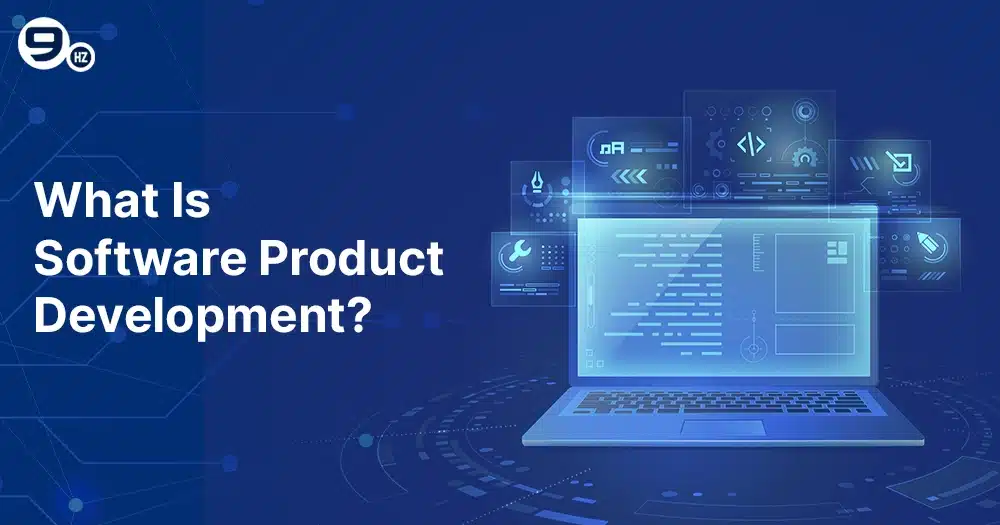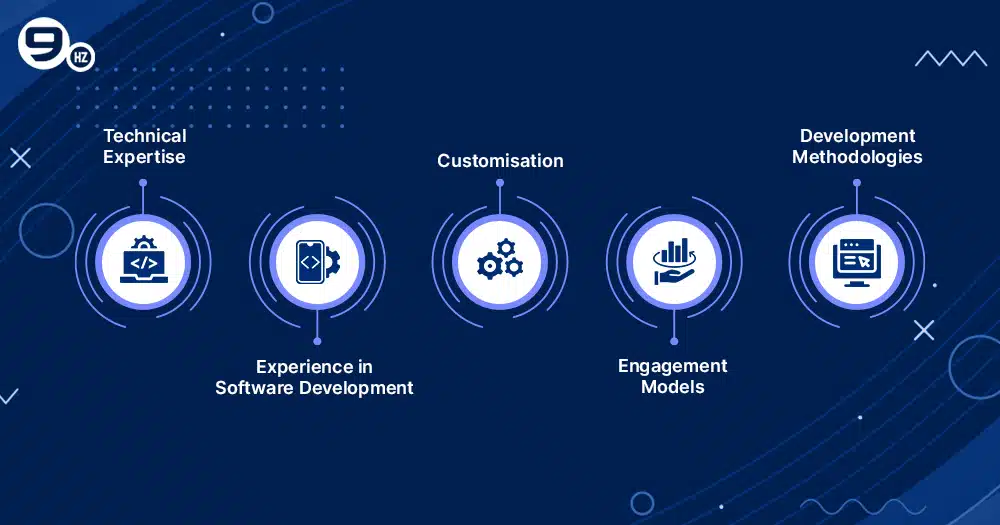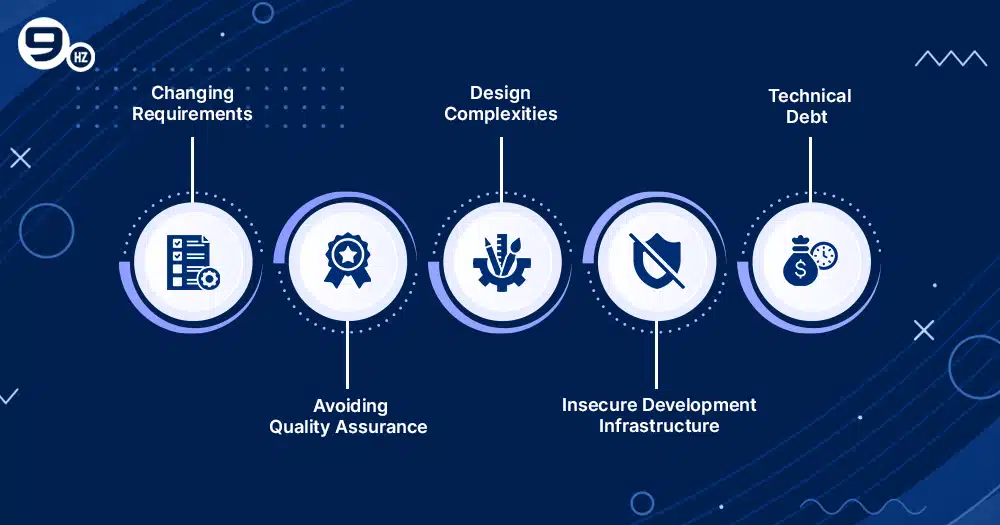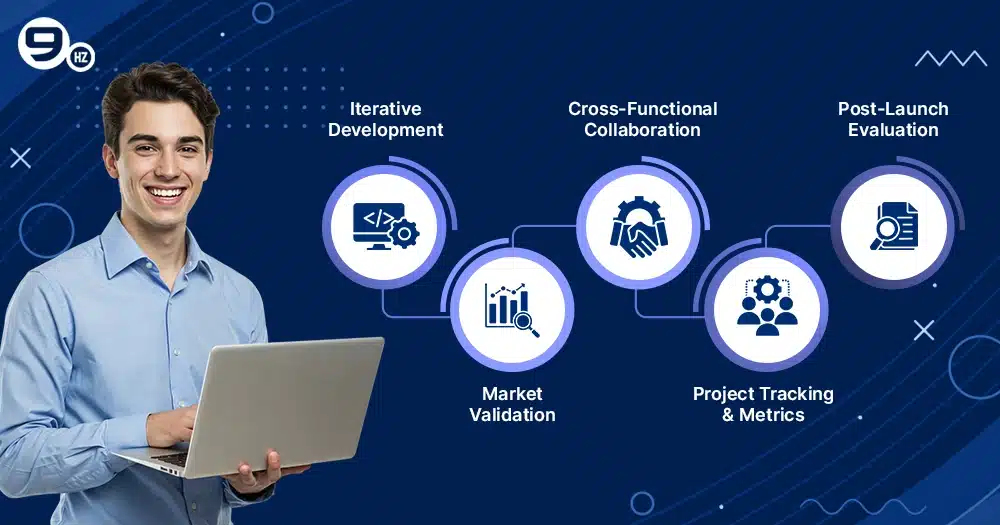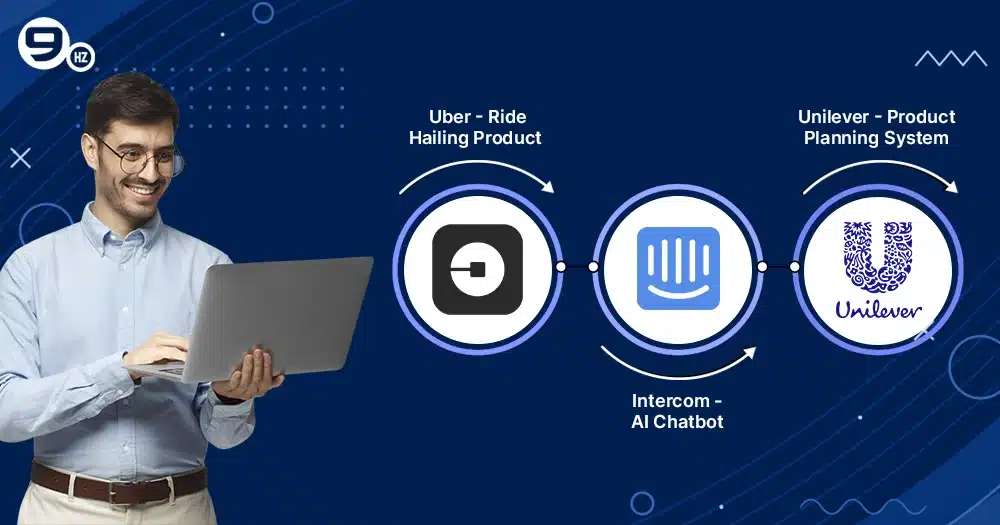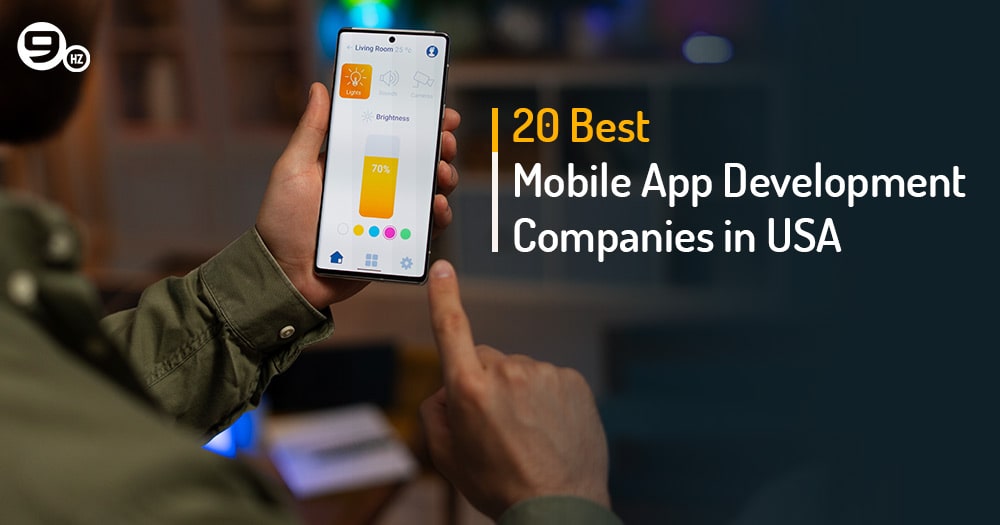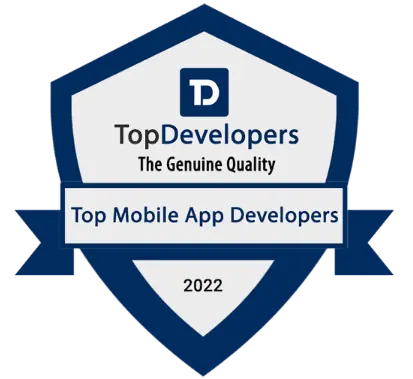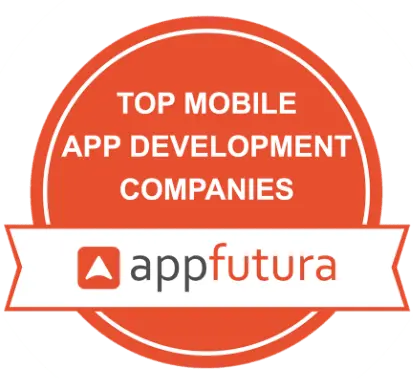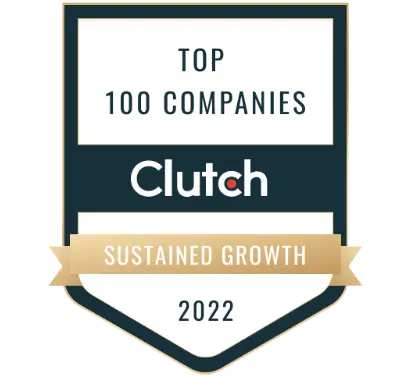Technology surrounds our lives like for real! We can use Gmail, WhatsApp, and Instagram on our smartphones, and we can integrate Microsoft Office or Google Workspace for office productivity. The number is too crazy, we can’t even track the exact number of software in the world that might be operating systems or individual applications. As the demand scales, software product development starts getting more traction due to technology upgrades among organisations.
According to Statista, more than 75% of companies will be adopting cloud computing, big data analytics, digital trade, AI technology, or eCommerce from 2023 to 2027. It can directly impact the market size for software product development to increase accessibility.
Here is a detailed blog on software product development and how it helps meet your business goals and objectives. As a trusted software development company, we will be sharing valuable insights on the software product development life cycle, strategic planning, and how to ensure your product achieves success in the market.
What Is Software Product Development?
Software product development is the end-to-end process of product designing, development, and deployment that helps create feature-integrated software for end users. Software product development is not just adding a set of code. The developing team focuses on assessing business needs and requirements to add features to the software product or improve any existing features. This is more like a steady and methodical process that focuses on solving any business problems and follows agile methodology, DevSecOps, or design innovation to launch the right product in the market.
Based on the types of software and process, you will find different forms of software product development:
Application Software Products
These are products designed to help users perform specific tasks and activities. It can be graphic design tools or office suites developed for diverse users.
System Software Products
These are products based on system software that comprise device drivers or operating systems that build improved software and hardware interactions.
Programming Software Products
This product is specific to programming and assists developers in writing, testing, and debugging code. Programming software products might include text editors, compilers, or Integrated Development Environments (IDEs).
Embedded Software Products
It is related to integrating software with any device with controlled functions and features, such as home appliances, smart TVs, or smartphones. These are often related to hardware with processing constraints, limited memory, and real-time data.
Key Stages of Software Product Development
The process of software product development goes through various stages of proper planning, procedures, and technologies to frame a software development life cycle. Here are the following stages for software product development:
Brainstorming Ideas
Before developing any successful software product, you can start by understanding the user’s needs and validating your idea. Here, you can brainstorm for product discovery with the following activities: market research, competitor analysis, user analysis, testing, and idea validation.
Designing
Once your blueprint for software development is created, you can start the design process for architecture, programming, user interface, security, and communication and choose the platform where the software will run. For the designing phase, an iterative model can be preferred which allows for continuous feedback and brings flexibility for prototype design to implement changes.
Development
After designing, it’s time to turn to development. You can begin framing the prototype, feature design, and real coding for the overall project. Whether you follow an agile or incremental model, the developing team will integrate code and the tech stack to build a software product.
Testing
At this stage, the system analyst will begin the testing stage to check parameters for quality assurance and remove any bugs or errors. Multiple tests, including unit, integration, security, acceptance, code, and performance testing, are suggested for developers for proper functionality and a better user experience.
Implementation
The implementation phase involves deploying your software product using an AI and automation approach. Many advanced developers use Application Release Automation (ARA) tools to integrate software based on production. After software product development, this requires connecting with other systems for better functionality.
Documentation
To support the future software product development process, updated documentation helps to get the complete outline of the system. This guide helps stakeholders and engineers understand projects and includes architecture design, validation docs, source code, and a manual guide for maintenance.
Maintenance and Support
This is the final stage for software product development, where measures are to be followed for maintenance based on the timeline and usability. It accounts for long-term success for products with regular audits and check-ins, ensuring that the software product functions as the client expects.
Choosing the Right Software Product Development Company
Every business expects to develop the perfect software without any flaws, but this would not be possible without hiring the right software product development company. So, if you are choosing a partner based on how they code, it will not be an ideal match. Here are the guiding factors that help to find the ideal software product development company based on your project needs:
Technical Expertise
Any software product development company you choose should have the required technical expertise. It should also be industry-specific, such as healthcare, fintech, or eCommerce, and have expert knowledge of tech, features, platform, programming and coding, or hardware integration.
Experience in Software Development
Developing a software product is a high-level technical job that directly impacts a company’s brand image, so companies are too cautious while selecting the development partner. So, the development company with proven experience in software development, resources, capability to handle pressure, and feature additions will be an ideal choice for software product development.
Customisation
It is another factor that helps to shortlist the right software product development company, as most businesses aim for personalisation and customised features to improve user experience. So, it is important to consider factors when choosing a developing company that follows end-user expectations.
Engagement Models
Generally, software product development processes do not have long timelines. Businesses often choose flexible models to utilise resources at a limited cost. You can select from the full in-house team or part-time developers, a time and material agreement, a fixed-price contract, or freelancers.
Development Methodologies
Good methodologies for software product development help the team be more organized, efficient, and able to adjust to changes. Some common types of development can be the agile or waterfall model, lean development, or DevOps for automation workflows.
Common Challenges and How to Overcome Them
Is there any technical development without challenges? The constant juggle for finding the right tools, libraries, feature integration, or system upgrade can result in chaotic scenarios. Here we have enlisted common challenges faced by developers and suggested solutions to implement.
Challenge 1 – Changing Requirements
Most developers find it challenging to keep up with changing project requirements and prompt improvements. Every business has a preference for an ideal product; however, if the specifications remain unclear, it can affect the development process.
Solution: We can eliminate this challenge with proper communication or create a blueprint for whether the product aligns with the right expectation or requirement. This blueprint can clearly define the project’s scope, ideation terms, and development process.
Challenge 2: Avoiding Quality Assurance
It’s not just code that delivers a software product; the driving factor is “Quality.” So, if developers do not review code regularly and miss out on finding errors at an early stage, it will create more complexities in later advanced processes.
Solution: Following a structured quality assurance process before a launch will help identify defects from functionality testing, even in the development phase.
Challenge 3: Design Complexities
Software product design is a crucial stage; it lays the foundation for the development process. So, whether you require a simple design or an advanced feature, you might create too many layers, components, and dependencies on tools. This directly affects the development phase and later results in the integration stage.
Solution: Use simple design patterns, wireframe, and prototype model to test design, use visualisation tools to add framework to software, and also develop a plan to handle errors and data flow.
Challenge 4: Insecure Development Infrastructure
Even in the software product development process, there is a risk of security breaches and vulnerabilities. Avoiding the security factor for software or not following a secure method for coding will increase the threat of data breaches.
Solution: Use only secure and built-in features for software beyond technology measures. Develop with advanced programming following penetration testing and code review to help create the ideal development infrastructure.
Challenge 5: Technical Debt
No one wants a delay for software product development and deployment, but not at the cost of messy code, program failure, and bugs that result in huge losses. Developers might rush into things and use shortcuts to deliver the right product.
Solution: Following the right coding standards, regular code reviews, and maintaining time for refactoring can save more time and resources.
Cost of Software Product Development
Based on the integration of software types and features, the cost of software product development varies. Whether you are setting an in-house team or hiring freelancers, the development cost can range between $35,000 and $3,00,000. Let’s have a broader look at the estimated cost with the help of a table:
| Classification | Type | Estimated Cost Range (USD) | Notes |
|---|---|---|---|
| Product Complexity | Simple | $10,000 – $50,000 | Basic functionality, MVPs, static apps, few screens |
| Medium | $50,000 – $150,000 | Business apps, APIs, dashboards, databases, and user management | |
| Complex | $150,000 – $500,000+ | Real-time features, AI/ML, high scalability, integrations, mobile + web | |
| Team Location | North America / Western Europe | $100 – $250/hour | High-quality, expensive labor |
| Eastern Europe / Latin America | $30 – $80/hour | Balanced cost and expertise | |
| South Asia (India, etc.) | $20 – $50/hour | Budget-friendly, large talent pool | |
| Engagement Model | In-house team | $120,000 – $500,000+ per year | Higher control, long-term investment |
| Freelancers | $5,000 – $100,000+ per project | Flexible, good for small-scale projects | |
| Outsourced agency | $30,000 – $300,000+ per project | Full-service, project management included | |
| Development Stage | Prototype / PoC | $5,000 – $25,000 | Basic concept validation |
| MVP (Minimum Viable Product) | $15,000 – $100,000 | Core features, launch-ready | |
| Full-scale Product | $75,000 – $500,000+ | Complete features, production-ready, scalable | |
| Platform | Web App | $10,000 – $200,000+ | Varies by functionality |
| Mobile App (iOS/Android) | $20,000 – $300,000+ | Native or hybrid, platform-specific complexity | |
| Cross-platform (Flutter, React) | $30,000 – $250,000+ | Shared codebase, cost-efficient |
Best Practices for Successful Product Development
Following the best practices for approach and guidelines that help companies become more successful in product development. Based on the industry knowledge, proven experience, and methodologies, here are the following best practices for product development:
Iterative Development
This approach focuses on prototyping, testing, and iteration to build a minimum viable product (MVP), gathering feedback from users. It helps to gain insights to make informed decisions and product iteration to develop a software product that meets customer expectations.
Market Validation
Before development starts, you can validate the designed product’s market demand and the viability of its features. Follow comprehensive market research, analyse customer pain points, and collect feedback on market needs. This helps launch the right software with more visibility and high market potential.
Cross-Functional Collaboration
It denotes regular communication and joint decision-making with cross-functional teams for engineers, marketers, designers, product managers, or other stakeholders. This practice covers varied aspects of software product development, such as marketability, user experience, and technical feasibility.
Project Tracking and Metrics
It follows the timeline and process of constant tracking of project progress, measuring key performance metrics for product development. You can use product management tools to assess the cost to develop, customer satisfaction, and revenue of project performance.
Post-Launch Evaluation
Another impactful practice to follow is gathering genuine feedback and monitoring performance for product launch. It helps to track customer satisfaction, business outreach post-launch, and user adoption rates. This data helps to mark areas where the core development and improvement of the product need to be addressed.
Real-Life Examples of Software Product Development
Till now, we have discussed software product development and its multiple aspects. It would be interesting to see its real-world implementation for product development for different industries:
Uber – Ride Hailing Product
One of the popular companies, Uber, was developed to connect riders and drivers and offer on-demand ride services with dynamic pricing and route optimisation. This is the outcome of large cross-functional team management, including developers, backend engineers, data scientists, AI experts, designers, and Site Reliability Engineers.
Intercom – AI Chatbot
Another example of software product development is Intercom, an AI-powered assistant that handles user queries and diverts complex ones to human agents. It has gone through interesting development stages of more than 12 months, a diverse team structure, designing a prototype, feature integration, and user optimisation.
Unilever – Product Planning System
Unilever has a manufacturing unit in Vietnam with more than 1400 employees, where they developed production planning optimisation and an auto weight system. The system aids staff in handling production lines and tracking the right quantity of products with AI, ML, and IoT for prediction and analytics. It results in a 10% cost reduction and 80% savings in administration time.
How can Ninehertz help you with Software Product Development?
Whether you are looking for a system, applications, or specialised software, NineHertz is your go-to partner for software product development. We are here to convert your simple idea into innovative development with consulting, custom development, software testing, and maintenance. Our expert development team helps you with the technology stack, such as Python, .NET, C++, Node.js, JAVA, or PHP for full-stack and custom software development. NineHertz is your trusted software product development company with more than 10 years of experience, having completed over 1300+ projects and serving industries, including eCommerce, Fintech, Real estate, Edtech, Healthcare, and manufacturing.
Conclusion
For software product development, all you need to follow is careful planning, adaptability, and collaboration to feature the right product for a dynamic market. Some of the popular methodologies of software development include waterfall, agile, and DevOps, which are used for the process of collecting information, designing, developing, testing, implementing, or deploying. Companies are actively investing in developing software based on niches, such as data analytics, blockchain, cybersecurity, edtech, fintech, SaaS, web, and app development. So, if you are breaking into the market with the best software, having the right strategy helps to target customer satisfaction, competitive advantages, resource optimisation, and risk management.
Frequently Asked Questions
How long does software product development take?
Basic designing takes 2 to 6 weeks, product development 2 to 4 months, and final deployment more than 6 months.
What is the difference between an MVP and a full product?
The basic difference is that an MVP is a basic product to validate the core idea and collect user feedback, while a full product is a complete version with scalable features, security, UI/UX, and secure deployment.
How much does it cost to develop a SaaS product?
The overall cost to develop a SaaS product can range between $50,000 and $3,00,000, depending on factors such as features, complexities, team location, and tech stack.
What are the first steps in software product development?
This step would be to validate an idea through market research, create a prototype and blueprints with UI/UX design, and also invest in the tech stack.
What’s the difference between a software product and a software project?
A software product is a packaged solution built for multiple users or a diverse market, such as SaaS apps. On the other hand, a software project is a custom-built solution designed to target specific needs or problems.
What is the typical team structure for software product development?
The team includes a UI/UX designer, a product manager, frontend and backend developers, QA testers, and customer support.
How do you choose the right technology stack for a software product?
You can select the right tech for software development based on product types, scalable features, team expertise, and project timeline or process.
How do Agile and Waterfall methodologies differ in product development?
Agile methodology is based on iterative development with flexible changes based on feedback for development. Waterfall is more like a linear or rigid approach where each phase of development is finalised, leaving no room for changes.
What is a product roadmap, and why is it important?
It refers to the strategic plan for outlining a software product’s vision, goals, timelines, and features. This plan is important for streamlining communication, team alignment, flexible frameworks, and decision-making.

